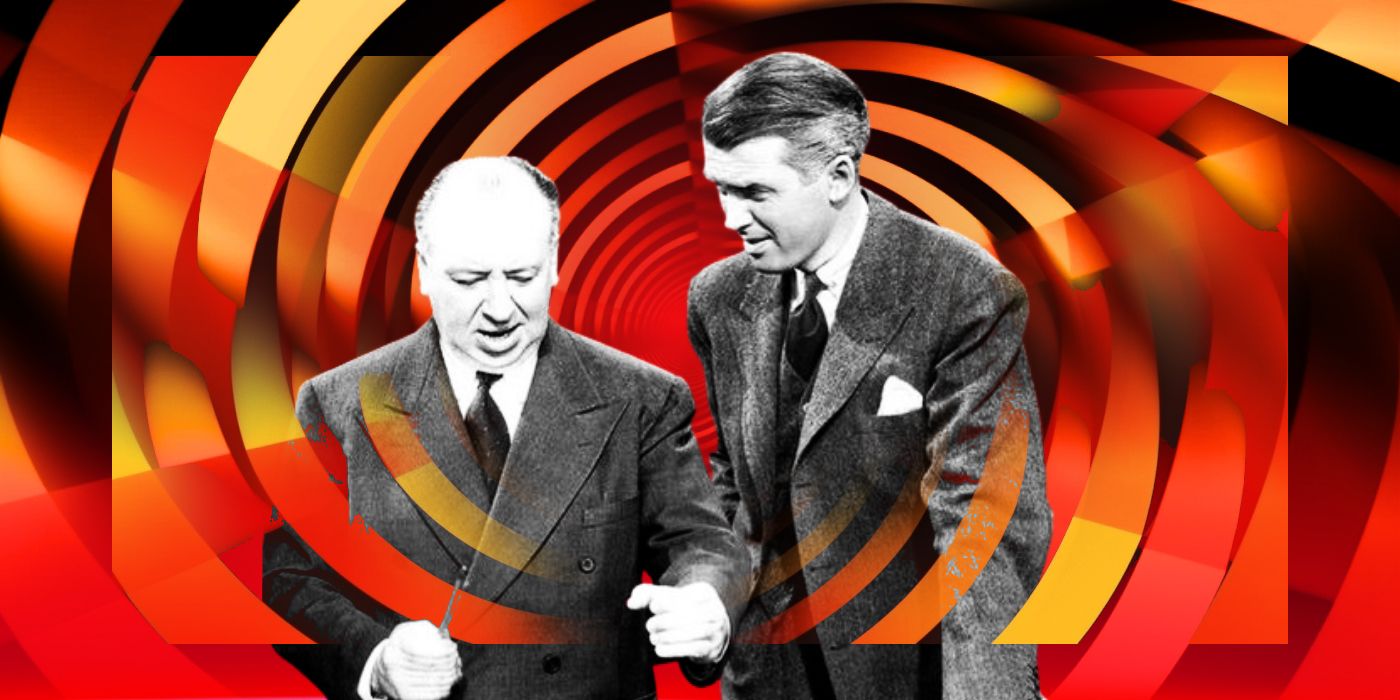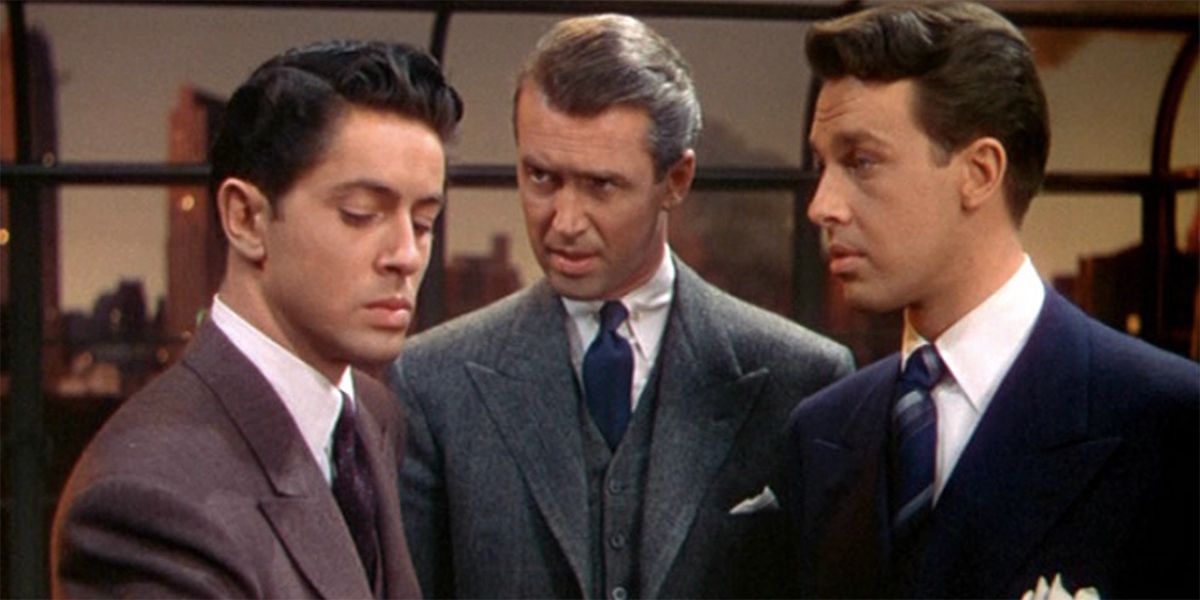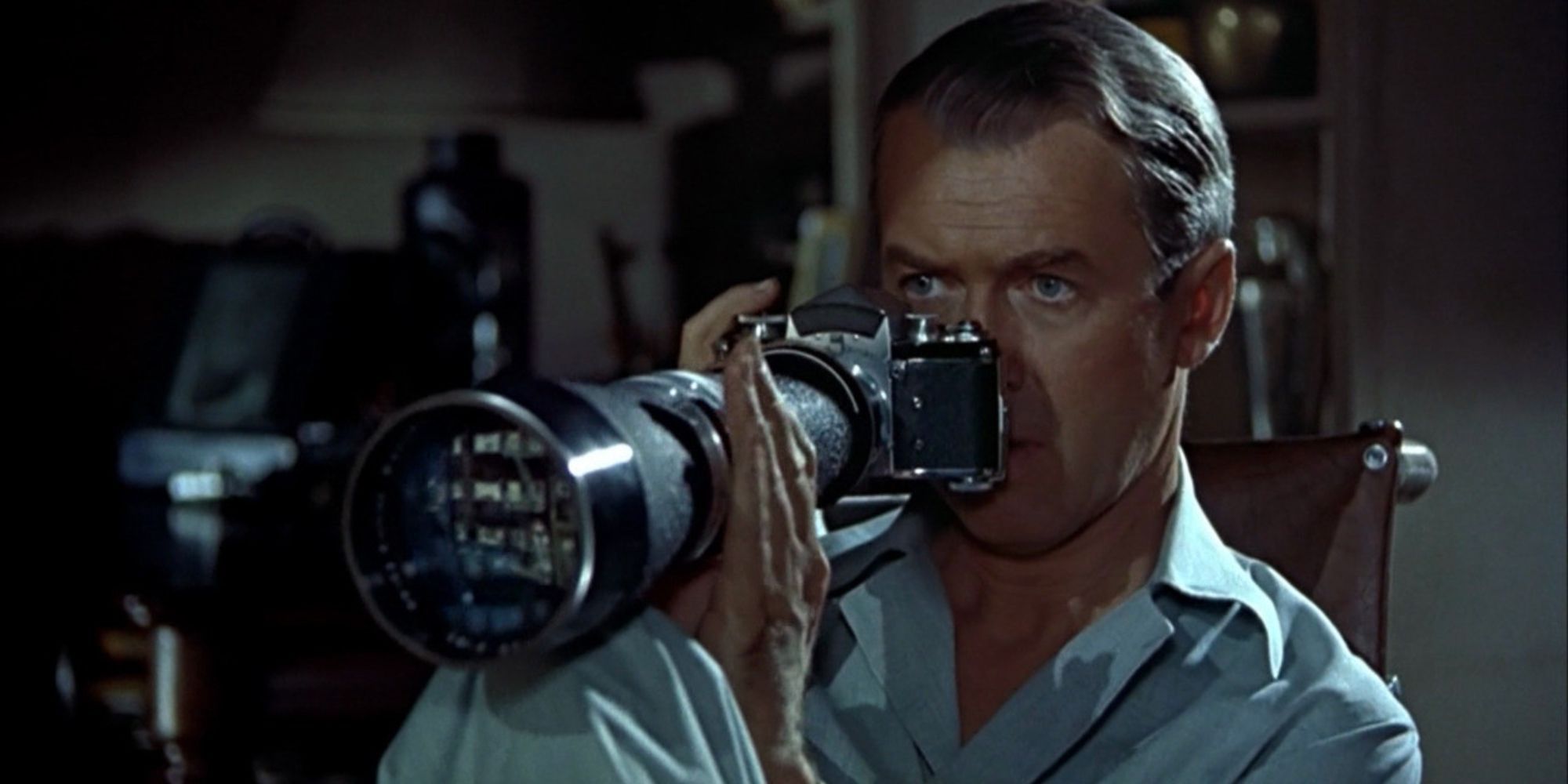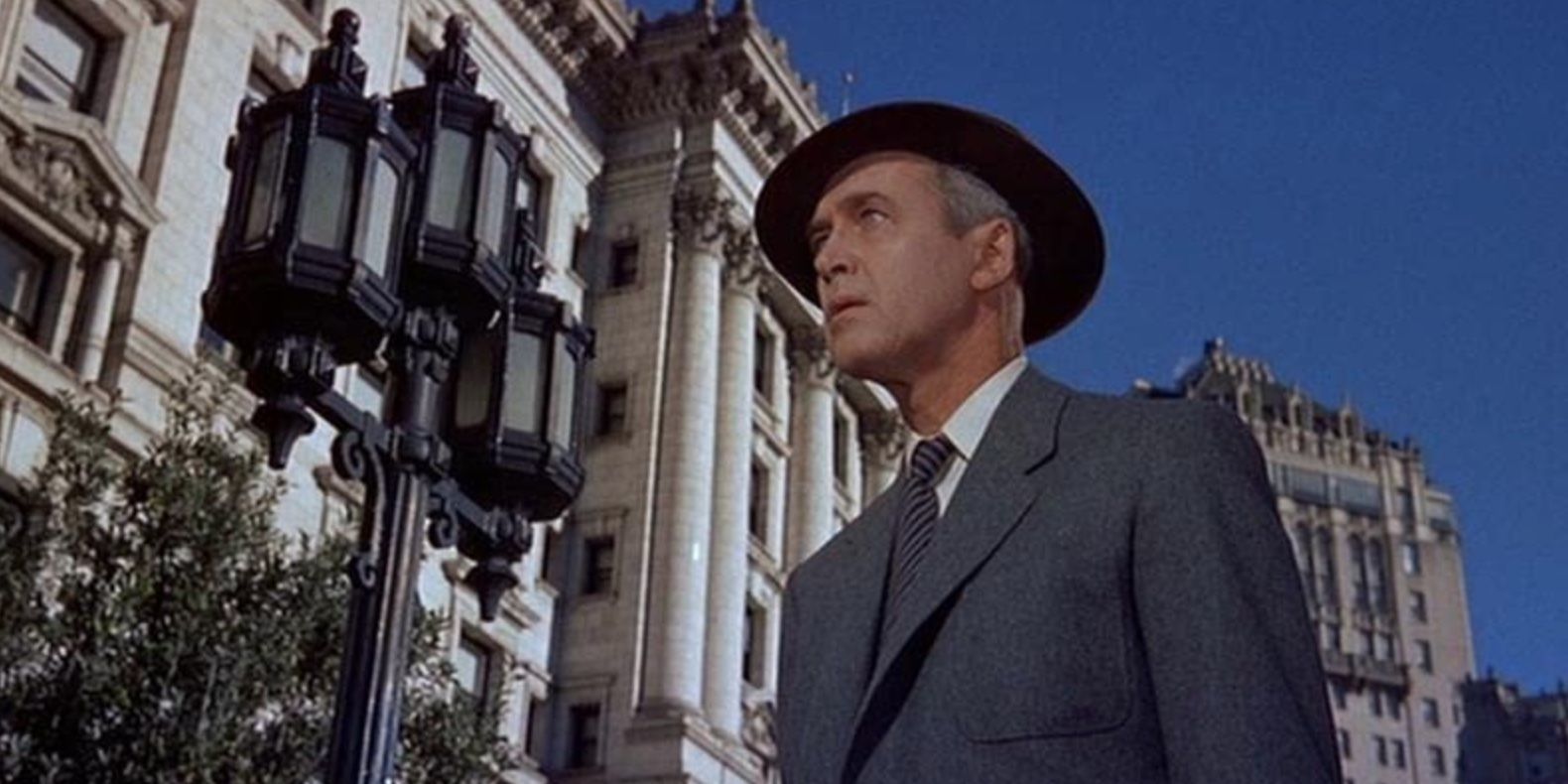If there are any two Hollywood icons that need no introduction, they would be Alfred Hitchcock and James Stewart. Hitchcock has produced multiple films that have since been called "the greatest," paving the way for experimental and innovative filmmaking with features like Psycho, The Birds, and North by Northwest. As for Stewart, he has provided some of film's most memorable performances in legendary works as the titular role in Mr. Smith Goes to Washington and George Bailey in It's A Wonderful Life. However, some of their respective best work was actually made with each other. The Hitchcock/Stewart collaborations are Vertigo, Rear Window, Rope, and The Man Who Knew Too Much, with some of these still being considered the best in film history.
As expected with some of the industry's most considerable talents and personalities, there were disagreements between the two amid their collaborative relationship. Despite their tense moments, there is no denying these two coming together made history and produced some of the most unforgettable films.
'Rope' Kickstarted the Hitchcock/Stewart Collaborations
The first time the two collaborated was for the film Rope, released in 1948. By this time, both were well-established in the industry and with the public. Stewart had already played his breakthrough role a decade earlier in You Can't Take It With You. As for Hitchcock, he was also well-known worldwide for pictures like Rebecca and Notorious, so the combination of the two men working together made movie magic and was the start of one of the most successful artistic duos in film.
Rope follows two young men (John Dall and Farley Granger) as they attempt to execute the perfect murder after their previous prep-school teacher, played by Stewart, unintentionally inspired them with one of his lessons. While the film was met with a mixed reception, the film is still known for its ambitious choices, such as the use of long takes. This refers to how Hitchcock was able to strategically cut away from a shot while the camera showed the back of a person or a piece of furniture, and continuing the next shot with the same visual, giving the appearance of one extremely long take. Years later, Stewart said how this technique of Hitchcock's made working on the set stressful and anxiety-inducing, knowing that if he messed up his dialogue during a long take, everyone would have to start over. Critics have since raved about this film but have also stated that Stewart was miscast. The production of Rope seemed to be the most stressful for Stewart of all his Hitchcock collaborations, telling The New York Times "'It was the craziest, most difficult thing, it was completely new.''
Hitchcock and Stewart Created a Production Company for 'Rear Window'
1954 saw the release of Hitchcock and Stewart's second film together: Rear Window. The critically-acclaimed feature sees a photographer (Stewart) in a wheelchair due to a broken leg, peering in on his neighbors by zooming in on them with his camera. The events escalate when he thinks he witnesses the murder of a woman.
Both Hitchcock and Stewart delivered in this paranoia thriller. Stewart's work with Hitchcock often gave him the opportunity to explore characters with a darker edge, and his role as Jeff is no exception. He is able to play on the duality of his character, making audiences question their rooting for an overtly flawed man. Hitchcock, on the other hand, uses his signature directing skills to depict voyeurism and the results of giving into grotesque curiosities. Another topic that keeps the discussion of the film going is the self-aware interpretation of the filmmaker's gaze, and how a filmmaker's job ties into the idea of voyeurism. Scholars and theorists like Laura Mulvey have also since pointed out the feature's use and interpretation of the male gaze. On top of that, there is the fact that one of the most interesting and entertaining films of the genre entirely takes place in Jeff's apartment. Due to Stewart's success in portraying moral ambiguity and Hitchcock's expert pacing and visual portrayal of thought-provoking themes, the film was a success and continues to be the face of the murder witness genre.
For Rear Window, the actor and director collaborated to create something off-screen as well. The two came together to form a short-lived company, Patron Inc., that produced and distributed the film. The corporation had initially gained the rights to It Had to Be Murder, written by Cornell Woolrich, which is the story that the film was adapted from. The production company later played a part in the Supreme Court case, "Stewart v. Abend." After the death of Woolrich in 1968, his story's rights ended up with agent Sheldon Abend, since the author passed before the rights' renewal with Patron Inc. This caused a plethora of copyright issues when Rear Window was starting to be broadcast on television, resulting in more lawsuits over the span of years. Despite these legal problems, Rear Window is arguably the most well-done Hitchcock film starring Stewart.
The Duo Continued the Tension With 'The Man Who Knew Too Much'
For the third time, Hitchcock and Stewart collaborated on the making of The Man Who Knew Too Much in 1956 (not to be confused with Hitchcock's 1934 with the same name and a different script). The 1956 film follows a husband and wife, played by Stewart and Doris Day, on a vacation with their son (Christopher Olsen). The family accidentally witnesses an assassination, starting a tense, high-stakes chain of events.
Stewart gives another convincing performance as the father of an abducted son, with some reviews claiming that this role topped his in Rear Window. Many critics, however, were not initial fans of this Hitchcock work, stating that the director was past his artistic prime. Many could not help but compare the 1956 film to the 1934 version, despite the fact that the two films have various, big differences. Nevertheless, the film is one of the many examples where Stewart understood Hitchcock's vision, an obvious quality that makes them a perfect filmmaking pair. Due to the previous success of Rope and Rear Window, especially the latter, The Man Who Knew Too Much was a success at the box office and set the scene for the duo's final film together.
'Vertigo' Caused a Feud Between Hitchcock and Stewart
The 1958 film Vertigo stars Stewart as a former police officer with acrophobia hired to follow his friend's wife, played by Kim Novak. As he becomes obsessed with her, many dark twists unfold that have tragic results. Revisiting the topic of scopophilia, Stewart once again shines with a character that goes beyond moral ambiguity and falls into perversion. His performance is so effective that it is often uncomfortable to watch as his Scottie aggressively tells Novak's character what to wear and how to look in accordance with his own desires. Hitchcock's achievements in Vertigo included the dolly zoom, which is executed by moving the camera away from its subject while zooming in on that subject at the same time, in order to portray the effects of Scottie's fear of heights.
While the film has since been praised for its themes and experimental techniques and is also cited as the inspiration for many later films, it was initially negatively received and performed poorly at the box office. This reaction to the film is ultimately what led to the end of their collaboration, with Hitchcock blaming Stewart's age and his older appearance next to Novak for the film's initial misfire. After this, Hitchcock proceeded to cast Carey Grant in his following film North by Northwest, despite Stewart gunning for the role. This was not the only instance of the two butting heads. According to actor Wendell Corey in Lawrence J. Quirk's biography titled James Stewart: Behind the Scenes of a Wonderful Life, the two would allegedly get into arguments on set and yell at each other.
Between this and Hitchcock moving on from Stewart due to his age, the collaboration that produced some of the greatest films of all time was brought to an end. However, there is no denying that the two brought out the best in each other artistically and made memorable movies together, with Vertigo often cited as one of, if not the, greatest films of all time. Stewart's ability to play complex, flawed characters ended up being the perfect match for Hitchcock's macabre and mysterious storytelling. It's just unfortunate it ended on hostile terms.




.jpg)
